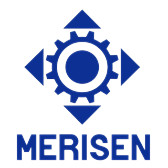
Recent Developments in Couplings
2024-08-08 09:41Recent developments in couplings:
1. Application of high-performance materials:
In recent years, many manufacturers have begun to use high-performance materials (such as high-strength alloys, composite materials, etc.) to improve the durability and performance of couplings. For example, the application of carbon fiber reinforced plastics (CFRP) and ceramic materials has improved the strength and high temperature resistance of couplings while reducing weight.
2. Research and development of smart couplings:
With the advancement of Industry 4.0, smart couplings have become a hot topic. These couplings are equipped with sensors and communication modules that can monitor torque, speed, temperature and other data in real time and transmit these data to the central control system. This technology can improve the system's monitoring capabilities and fault prediction capabilities, thereby improving equipment reliability and maintenance efficiency.
3. Green environmental protection and sustainable development:
Environmental protection and sustainable development have become a hot topic of global concern. Many coupling manufacturers are committed to developing products with low energy consumption and low environmental impact. For example, measures such as reducing material waste, optimizing production processes, and using recyclable materials are gradually being applied to coupling production.
4. The introduction of new designs:
As industrial needs change, the design of couplings is also evolving. For example, new flexible coupling designs can better cope with vibration and impact of equipment, improving the operating stability and life of equipment. In addition, new types of spiral couplings and contactless couplings are also being introduced to meet the needs of specific applications.
5. Market consolidation and acquisitions:
The coupling industry is experiencing frequent market consolidation and corporate acquisitions. Large manufacturers expand their product lines and market share through acquisitions or partnerships. For example, some major coupling manufacturers expand their product technology and market coverage by acquiring small and medium-sized enterprises.
6. Updates to industry standards and certifications:
The standards and certifications in the coupling industry are also being updated. New international standards and certification systems have put forward higher requirements for the design, production and testing of couplings. The update of these standards helps to improve the quality and reliability of couplings and promote technological progress in the industry.
7. Research on electronic couplings:
The research and development of electronic couplings, especially electromagnetic couplings, is also ongoing. This type of coupling uses electromagnetic force to transmit torque, has the advantages of no friction, no lubrication, and no maintenance, and is suitable for applications with high environmental requirements.
8. Expansion of Automation and Robotics Applications:
With the rapid development of automation and robotics, couplings are increasingly used in these fields. For example, high-precision, low-backlash couplings are widely used in robot joints and automated production lines to improve operational accuracy and efficiency.
These trends reflect the continuous progress of the coupling industry in terms of technological innovation, environmental protection, and intelligence. These changes not only promote the development of coupling technology, but also have a positive impact on the performance and reliability of equipment in related industries.
